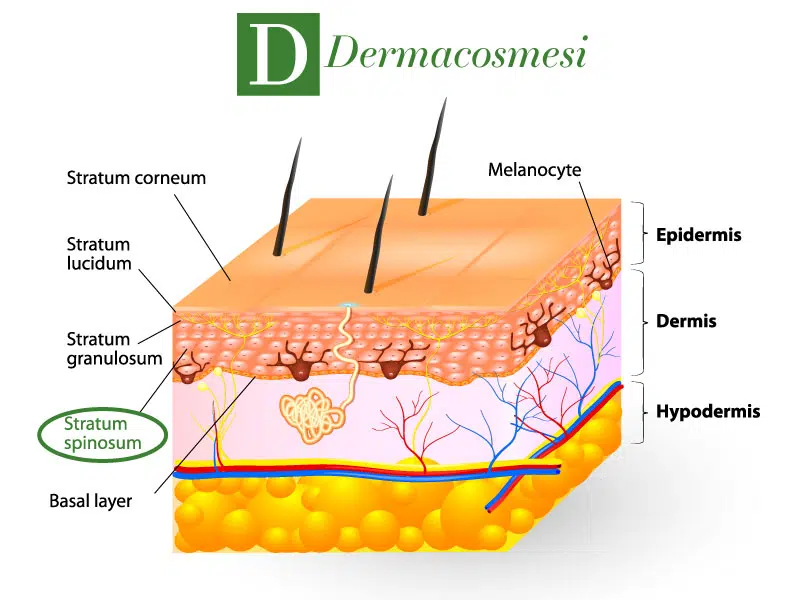In the anatomical structure of the skin, we find the stratum spinosum or Malpighi’s layer, which lies precisely between the stratum granulosum and the basal layer.
Contents
- 1 Stratum Spinosum of the skin: how it is composed and what it is used for
- 2 Desmosomes: the protein junctions of the spinous layer of the skin
- 3 Melanosomes: the dark organelles of the dermis
- 4 Melanocytes: they are responsible for skin color
- 5 Langerhans cells: very important for the skin’s immune response
Stratum Spinosum of the skin: how it is composed and what it is used for
Histologically, the stratum spinosum is quite thick, made up of different types of cells that flatten out as they get closer to the upper layer, the stratum granulosum.
The name spinosum, is related to the cytoplasmic bridges in the epidermis
The name spinosum is derived from the numerous eversions present that form cytoplasmic bridges. These in fact give a spine-like appearance, hence the name spiny.
Desmosomes: the protein junctions of the spinous layer of the skin
These bridges have protein junctions, the desmosomes, that can connect other adjacent cells.
The proteins synthesized in the stratum spinosum
In the stratum spinosum, the cells present synthesize several proteins including involucrin.
These cells accumulate in the cell membrane and forming the cornified cell envelope.
Melanosomes: the dark organelles of the dermis
Also present in the stratum spinosum are dark organelles called melanosomes.
Mature melanosomes are rich in melanin, which is in turn synthesized by melanocytes.
Melanocytes: they are responsible for skin color
Melanocytes are dendritic cells, found among the keratinocytes of the Malpighi layer, responsible for skin color.
Langerhans cells: very important for the skin’s immune response
Among the various cells of the stratum spinosum also we find the Langerhans cells.
These dendritic or star-shaped, paddle-like cells resemble melanocytes as a structure but differ from them in the absence of pigment, the absence of desmosomes and the presence of Birbeck granules.
Langerhans cells in the stratum spinosum and in the epidermis in general turn out to be very important because they are directly involved in the skin’s immune response.
